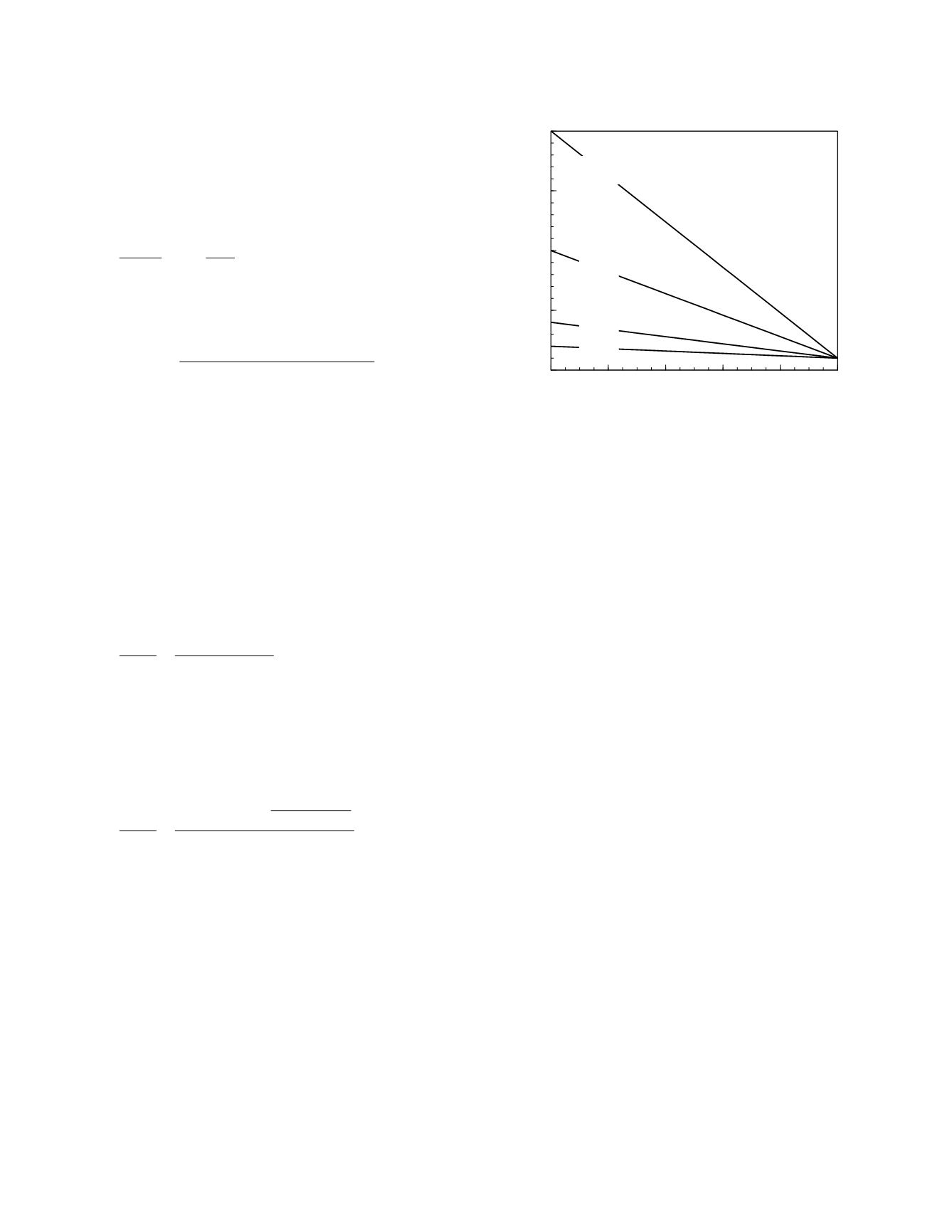
cardiac surgery. The patient has chronic liver
disease that is expected to result in about a 15
percent reduction in the hepatic clearance rate of the
drug. His measured creatinine clearance rate is 85
ml/min. Individualization of his maintenance dose is
based on,
Cl
indiv
Cl
avg
=
0.5 85
115
+
0.5
%
0.85
=
0.79
Calculation of F
indiv
/F
avg
.
For drugs adminis-
tered orally (Noe 1997),
F
=
F
form
F
abs
(
1
−
E
hepatic
)
1
−
F
abs
(
1
−
f
noncycled
)
E
hepatic
where
F
form
is the fraction of drug released from the
particular formulation,
F
abs
is the fraction of the
released drug that enters the portal circulation, and
f
noncycled
is the fraction of the extracted drug that does
not undergo enterohepatic recirculation. If enterohe-
patic recirculation is ignored,
F
=
F
form
F
abs
(
1
−
E
hepatic
)
F
form
is generally assumed to be constant. F
abs
is
affected by gastrointestinal disease but not in a
predictable way. Thus, individualization is based
solely on hepatic extraction fraction,
F
indiv
F
avr
=
1
−
E
hepatic
,
indiv
1
−
E
hepatic
,
avg
where
E
hepatic,indiv
and
E
hepatic,avg
are the individual and
population average values, respectively. If it is
assumed that, in liver disease, the reduction in
hepatic extraction fraction is proportional to the
decline in hepatic clearance rate, then,
F
indiv
F
avr
=
1
−
E
hepatic
,
avg
Cl
hepatic
.
indiv
Cl
hepatic
,
avg
1
−
E
hepatic
,
avg
This assumption is rarely strictly valid because the
hepatic extraction fraction depends upon hepatic
plasma flow rate as well as hepatic clearance rate,
but it is a useful clinical simplification. The rela-
tionship is graphed for four values of the population
average hepatic extraction fraction in Figure 12.8.
The curves show that drugs with hepatic extraction
fractions less than 0.5 (hepatic clearance rates less
than 400 ml/min) require little or no individualiza-
tion for bioavailable fraction except in severe liver
disease. Drugs with larger hepatic extraction frac-
tions should be individualized for bioavailable frac-
tion whenever liver disease is present. The dose
changes for drugs with very large hepatic extraction
fractions can be expected to be substantial. For
instance, for a 15 percent reduction in the hepatic
clearance rate of a drug with a hepatic extraction
fraction of 0.90, the maintenance dose should be
reduced by 0.85-fold based on individualization for
clearance rate and by 0.43-fold based on individuali-
zation for bioavailable fraction, for a total of a
0.36-fold dose reduction.
Determination of individual kinetic parameter
values.
The foregoing approaches for calculating
individual kinetic parameter values are based on
measures that correlate with the individual parameter
values. It would, of course, be preferable to
actually determine the values of the parameters in
the individual patient before beginning therapy.
This is especially true when administering a drug
that has a narrow therapeutic index. Accuracy in the
individualization of therapy with such drugs is very
important.
The most accurate way to obtain a patient’s
kinetic parameter values for a drug is to conduct a
pharmacokinetic analysis of the plasma disposition
curve that results from a small dose of the drug
given to the patient. A drug dose administered for
this purpose is called a test dose. To obtain the
plasma disposition curve, blood specimens need to
be obtained at specified times following administra-
tion of the drug. Typically, the blood sampling
scheme needs to be fairly intensive; i.e., numerous
blood specimens usually need to be taken. The
kinetic parameter values can be derived from the
plasma drug disposition using noncompartmental
techniques (Noe 1997) or they can be calculated
Drug Therapy
12-10
0
0.2
0.4
0.6
0.8
1
Cl
hepatic,indiv
/ Cl
hepatic,avg
0
5
10
15
20
F
indiv
/ F
avg
E
hepatic,avg
0.95
0.90
0.75
0.50
Figure 12.8
F
indiv
/F
avg
as a function of Cl
indiv
/Cl
avg
assuming
that E
hepatic,indiv
is proportional to Cl
indiv
/Cl
avg
.


